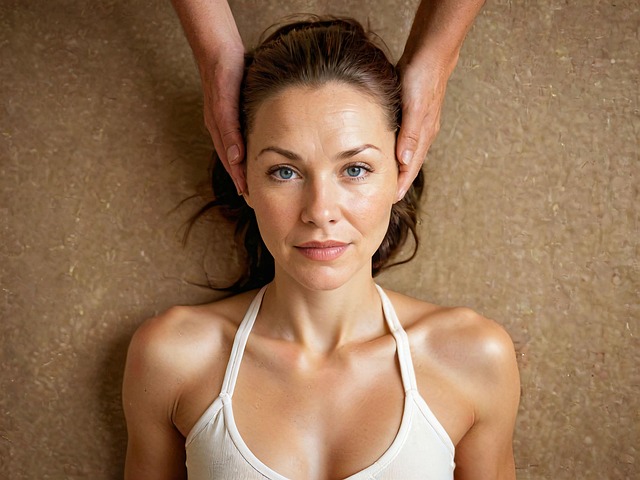Cold plunging, or cold water therapy, is a popular anti-aging method that involves exposing yourself to cold water through showers, ice baths, or facial dips. This process triggers vasoconstriction, stimulating beneficial responses like enhanced collagen production and improved circulation upon rewarming. Regular cold plunges can significantly improve skin tone, texture, and overall radiance, making it an effective tool for skin rejuvenation by minimizing fine lines, wrinkles, and boosting elasticity. The science behind this method shows that cold exposure reduces wrinkles, improves skin elasticity, and stimulates collagen production, contributing to a more youthful appearance.
“Unleash your skin’s hidden potential with the age-defying power of cold plunges. This immersive exploration delves into the science behind cold water therapy and its profound impact on slowing down skin aging. Discover how a simple plunge can transform your complexion, reduce wrinkles, and foster a radiant glow. From unlocking cellular regeneration to enhancing blood flow, this article uncovers the benefits of cold exposure for achieving youthful skin. Prepare to dive into a world where cold becomes your secret weapon in the battle against time.”
Unlocking the Science Behind Cold Plunges and Skin Aging
Cold plunging, or cold water therapy, has gained traction in recent years as a promising approach to slowing down the aging process, particularly when it comes to skin health. By immersing yourself in cold water, whether through quick showers, ice baths, or even just dipping your face in icy water, you’re not just providing a shock to your system—you’re stimulating a series of beneficial physiological responses.
At the heart of this lies vasoconstriction and subsequent vasodilation. Cold exposure causes blood vessels to narrow, which reduces blood flow to the skin’s surface, a process known as vasoconstriction. This triggers a range of anti-aging effects, including improved collagen production and enhanced circulation once the body re warms. Over time, consistent cold plunging can contribute to a more youthful complexion by reducing the appearance of fine lines and wrinkles, improving skin texture, and boosting overall radiance.
Potential Benefits of Cold Water Therapy for Youthful Skin
Cold water therapy for youthful skin has gained traction as a potential antidote to aging. The practice, often involving short immersions in cold plunges or ice baths, is believed to stimulate various physiological responses that benefit the skin. One of the key benefits of cold plunges for anti-aging is their ability to boost blood circulation. Upon exposure to cold, the body constricts blood vessels, followed by a rapid expansion as it warms up again. This process can enhance collagen production, a protein crucial for maintaining skin elasticity and reducing the appearance of wrinkles.
Additionally, cold water immersion may help reduce inflammation and promote skin healing. It’s thought to activate the release of endorphins, the body’s natural painkillers, which can contribute to a calm, radiant complexion. Studies suggest that regular cold therapy sessions could lead to significant improvements in skin tone, texture, and overall appearance, making it a promising tool for those seeking effective anti-aging strategies focusing on cold water therapy for youthful skin.
Exploring Cold Exposure's Role in Skin Rejuvenation
Cold exposure has emerged as a promising ally in the quest for youthful skin and effective anti-aging strategies. The concept of using cold plunges or water therapy for skin rejuvenation is gaining traction among skincare enthusiasts and professionals alike. When your skin is exposed to cold temperatures, whether through a brief cold plunge or even just cool water during cleansing, it triggers various physiological responses that can have significant anti-aging effects.
One of the key benefits is improved blood circulation. Cold water constricts blood vessels, followed by vasodilation as the body warms up, promoting a healthier flow of oxygenated blood to the skin’s surface. This increased circulation contributes to enhanced collagen production, a protein essential for maintaining skin elasticity and reducing the appearance of wrinkles. Moreover, cold exposure can stimulate the release of human growth hormone (HGH), which plays a crucial role in repairing damaged cells and tissues, leading to smoother, more rejuvenated skin.
The Evidence: Does Cold Plunge Really Reduce Wrinkles?
The science behind cold plunges and their impact on aging is an intriguing topic that has garnered attention from skincare enthusiasts and researchers alike. Numerous studies suggest that exposure to cold water, often in the form of cold plunges or immersions, can have significant anti-aging effects on the skin. This therapy involves quickly dipping oneself into icy water, typically for short periods, which triggers a range of physiological responses.
One of the key benefits associated with cold plunges is their ability to reduce the appearance of wrinkles and improve skin elasticity. Cold water constricts blood vessels, stimulating collagen production and enhancing skin firmness. Several studies have shown that regular cold exposure can lead to visible improvements in skin texture and a more youthful complexion. The anti-inflammatory properties of cold therapy also play a role in minimizing skin damage caused by environmental factors, thus slowing down the aging process.
Cold plunging offers a promising natural approach to combat signs of aging, leveraging the power of cold water therapy for youthful skin. By understanding the science behind it and exploring its various benefits, from skin rejuvenation to potential wrinkle reduction, individuals can make informed decisions about incorporating this practice into their anti-aging regimens. While more research is needed, existing evidence suggests that cold exposure could be a game-changer in maintaining a youthful complexion.
